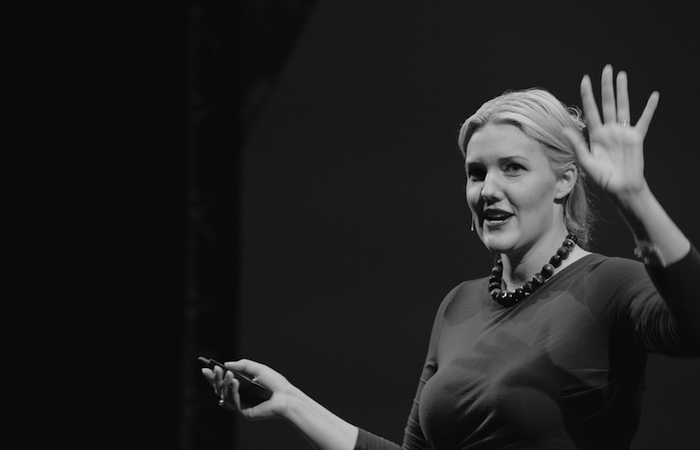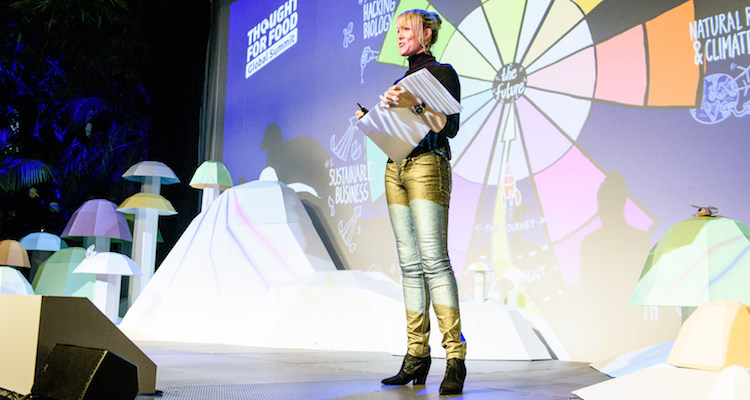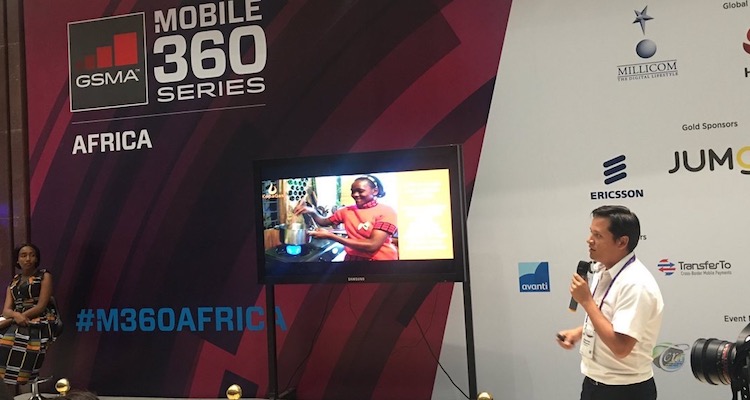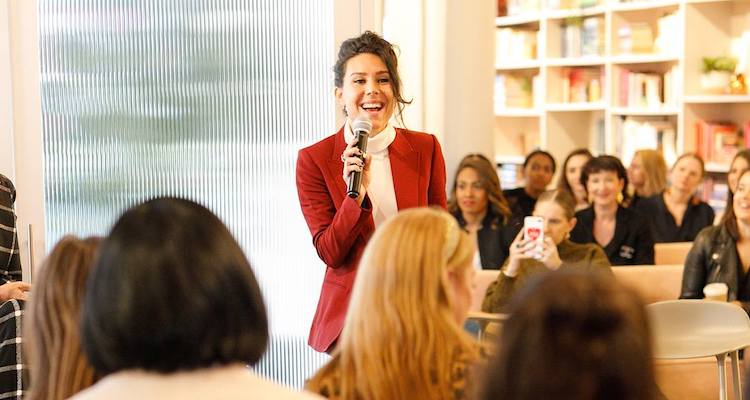Listen Now
There is no shortage of talk about innovation in the aid and development space – but how much of this talk has actually moved beyond small scale piloting programs into standard operations for funders and implementors? My unscientific read from the field continues to say “not much,” especially in the case of large-scale implementors. Like any established system or process, fundamentally shifting the way business is done takes both time and unwavering leadership. The US Global Development Lab at USAID seeks to be a mechanism for taking ideas to change-making action. As explained by Alexis Bonnell, my guest on the 124th Terms of Reference Podcast, the Lab seeks to be a catalyst for nothing less than “the transformation of the development enterprise by opening development to people everywhere with good ideas, promoting new and deepening existing partnerships, bringing data and evidence to bear, and harnessing scientific and technological advances.” Alexis is the Division Chief in Applied Innovation and Acceleration for The Lab. As you’ve come to expect from TOR guests, she is definitely someone to listen to: she has developed and delivered over a billion dollars of humanitarian and development programming in over 25 conflict, post-conflict, and emergency countries, in almost every sector from education to stabilization, for more than 30 International Bi-lateral donors, 10 UN agencies, the military, and the private sector. You can connect with Alexis here: https://www.linkedin.com/in/alexisbonnell https://twitter.com/alexisbonnell
IN TOR 124 YOU’LL LEARN ABOUT:
- The work done at USAID’s Global Development Lab.
- GDL’s initiatives in Open and Directed Innovation, which has increased the volume and diversity of contributions to levels almost overwhelming.
- How innovators around the world face the same “business barriers.”
- About “smart risks,” which takes dedicated learning and partnership building.
- Why often makes more sense for USAID to accompany innovation processes than to lead them.
- Alexis’s defense of looking at aid from a “customer standpoint” where having options is good but information and empowerment are essential.
- Words of encouragement about USAID leadership, the positive world of the U.S. in the world, Alexis’s love for her job, and how all of this means we could be the generation where extreme poverty ends.
OUR CONVERSATION INCLUDES THE FOLLOWING:
Organizations
- USAID
- USAID’s Global Development Lab
- https://www.usaid.gov/globaldevlab
Topics
- Innovation, Open and Directed
- Collaboration
- “Challenges”, crowdoursing contests
- Car fatalities
- Innovation exchanges
- Innovation culture management
- Agile project management approach
Places
- Annandale, VA
- Nairobi, Kenya
EPISODE CRIB NOTES
Applied innovation and acceleration at USAID USAID’s mission is to end extreme poverty. “We believe this is possible within our careers.” GDL is USAID’s hub for innovation and interaction with new actors, takes on “smart risks.” Democratizing development is the trend. “Sometimes we didn’t actually know where the solution was coming from.” It was revealed from contests they ran. A man came up with a solution of child birth. He was a mechanic. “Opening up and tapping into the collective global genius is really a game changer.” Play games and win prizes Approaches to innovation. This is open, which is good for “surface issues.” There is directed innovation, often addressed through “grand challenges.” USAID never does them alone, “convene rather than control.” Ask what the problem actually is, not what the solution should be. Letting virtually anyone participate is “exciting,” it has allowed partnerships never done before. Filtering and due diligence is still important, but funds are awarded. When a person wins, he gets money and assistance through stages, along with ongoing observation. Scaling is a challenge for most innovators, they face the same business barriers as anyone. GDL tackles “implementation of innovation” through their partners everywhere, their channels. Story to run with Car accidents in Nairobi kill more people per year than the top three health issues combined. They made a small investment through a local initiative, and a controlled group experiment showed 60% reduction in car fatalities within a year. “And it was all done with a sticker.” “Sometimes it makes all the sense in the world not to be us.” Insurance companies are interested in reducing car fatalities, for example. Weather prediction algorithms for farming. Farming capacity development and technology transfer from the U.S. It centers on the idea of socialization, with a “global innovation exchange.” It connects technologists and implementers. “Almost business intelligence.” “The U.S. should feel pride with the work they do for the world.” USAID seeks for efficiency and best use of taxpayers’ money means sometimes going to partners better suited to implement. Is it overwhelming? “Is that bad?” From a consumer point of view, having options is a very good thing. Alexis wants options to make better decisions. Technology also helps in making a choice around value prospects. It can involve history of the solutions, what the evidence says. It is a cultural shift. “We have to be willing to evolve that approach, to have that hunger for something new. Also to inform each other about what did not work. Commit to solve.” Smart risk: rigorous testing, sharing information. They approach project managers with their corpus of evidence, but to empower rather than convince. Iteration is promoted. Monitoring and evaluation for agility “I’m so impressed with my colleagues.” Improvement is a constant conversation. ‘Agile’ approaches are interesting. But sometimes “boring” approaches are inevitable. Respect for “evolving expertise.” “Our idea of the future changes on a daily basis.” Development and innovation are sports. “Development athletes,” bright young motivated minds are increasingly joining. Coming: shift from “beneficiary” to “customer.” These have refreshed organizational mottos, “it has changed how we do development.” IT, connectivity and smartphones are game changers. “We can talk directly to the end customer.” “We can track tech use in real time.” The conversation continues “We are serious about empowerment.” Some development professionals claim “they don’t know what they need.” The solution is not marketing but advocacy. There might be behavior psychology elements at play. Leadership is focused and understanding. At the time of disruption, they are ready to test and incorporate USAID’s processes. If it helps influence, it is worth trying. Alexis’s personal journey about “value in evolution,” learning to let go. What stifles innovation, and how it doesn’t Inertia. “Change is hard.” Cultural change management is another level. Updating working frameworks. It’s a matter of project management design. Breaking barriers, in approachable chunks. Step back from complexity. Alexis wants to simplify partners’ operations, procurement. New normal Procurement guidelines have evolved, including words like “co-creation.” Alexis is surprised by USAID leadership for being adaptable. Alexis Popular innovation books. Partners around the world. “Every day I see new things and new approaches.” Digital identity and digital finance, in development. Nextdoor app.Please share, participate and leave feedback below!
If you have any feedback you’d like to share for me or Alexis, please leave your thoughts in the comment section below! I read all of them and will definitely take part in the conversation. If you have any questions you’d like to ask me directly, head on over to the Ask Stephen section. Don’t be shy! Every question is important and I answer every single one. And, if you truly enjoyed this episode and want to make sure others know about it, please share it now:[feather_share show=”facebook, twitter, linkedin, google_plus” hide=”reddit, pinterest, tumblr, mail”]
Also, ratings and reviews on iTunes are very helpful. Please take a moment to leave an honest review for The TOR Podcast!




